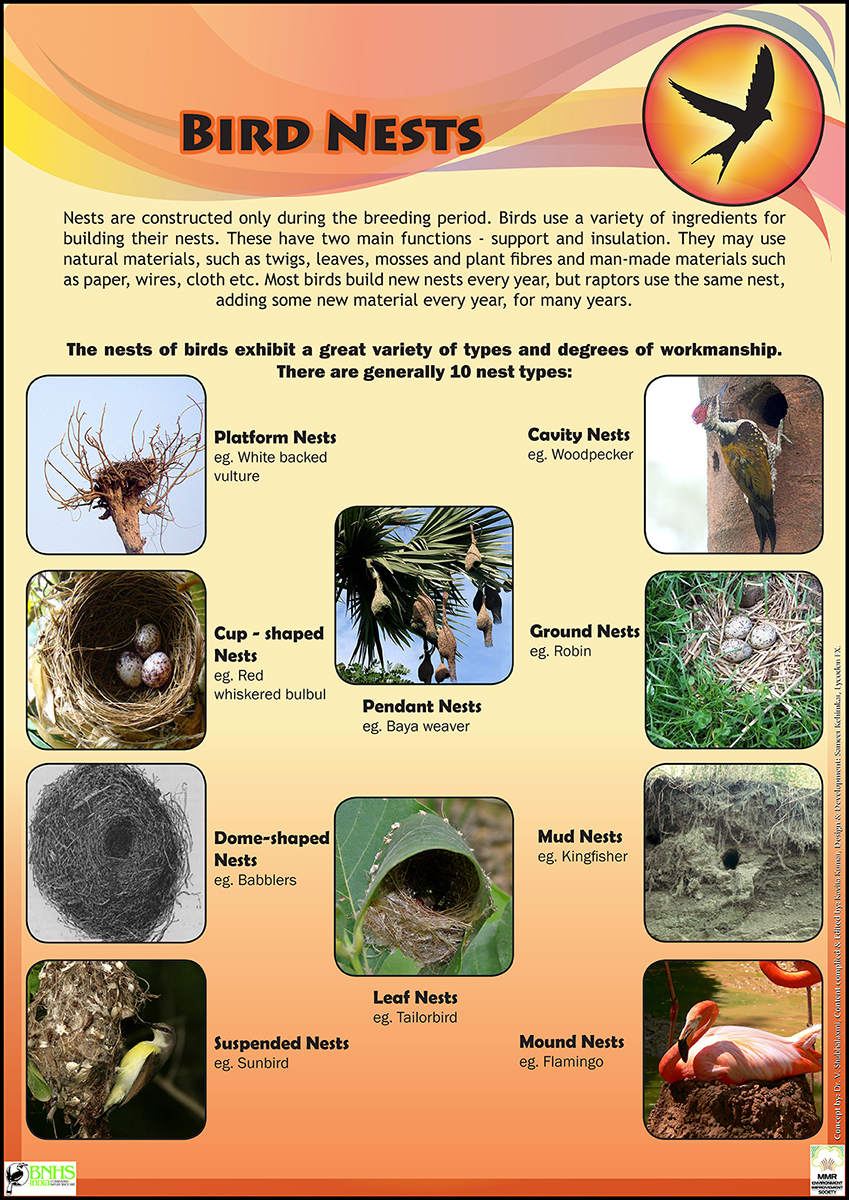
Bird Life Educational posters for Kids & schools
2. Cavity Nests. About 85 species in North America make nests using cavities, or holes, found in birdhouses, gaps in structures, tree hollows, and more.. Some birds will excavate to make cavities in soft, decaying wood. Often these excavated holes are tunnel- or chamber-like, extending downward into the tree.
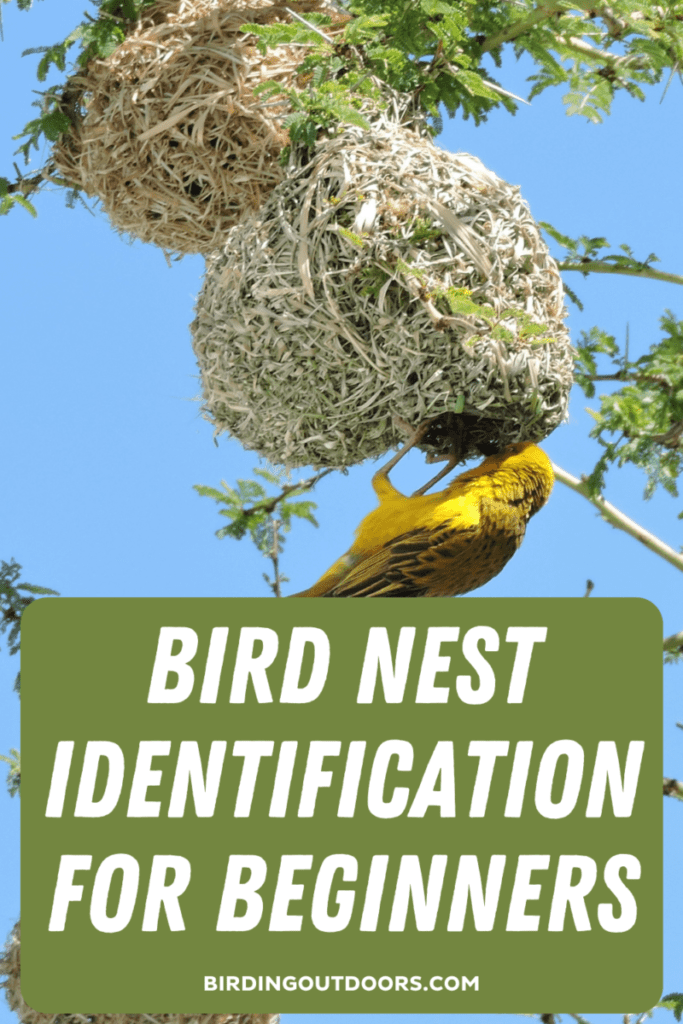
Bird Nest Identification 5 QUICK Ways! (Read THIS First!) Birding
Migratory birds have separate ranges for their breeding and wintering activities, whereas "resident" birds live in the same region year-round. Nests found early in the spring tend to belong to non-migratory residents, while migrants return and breed later in the spring and summer.
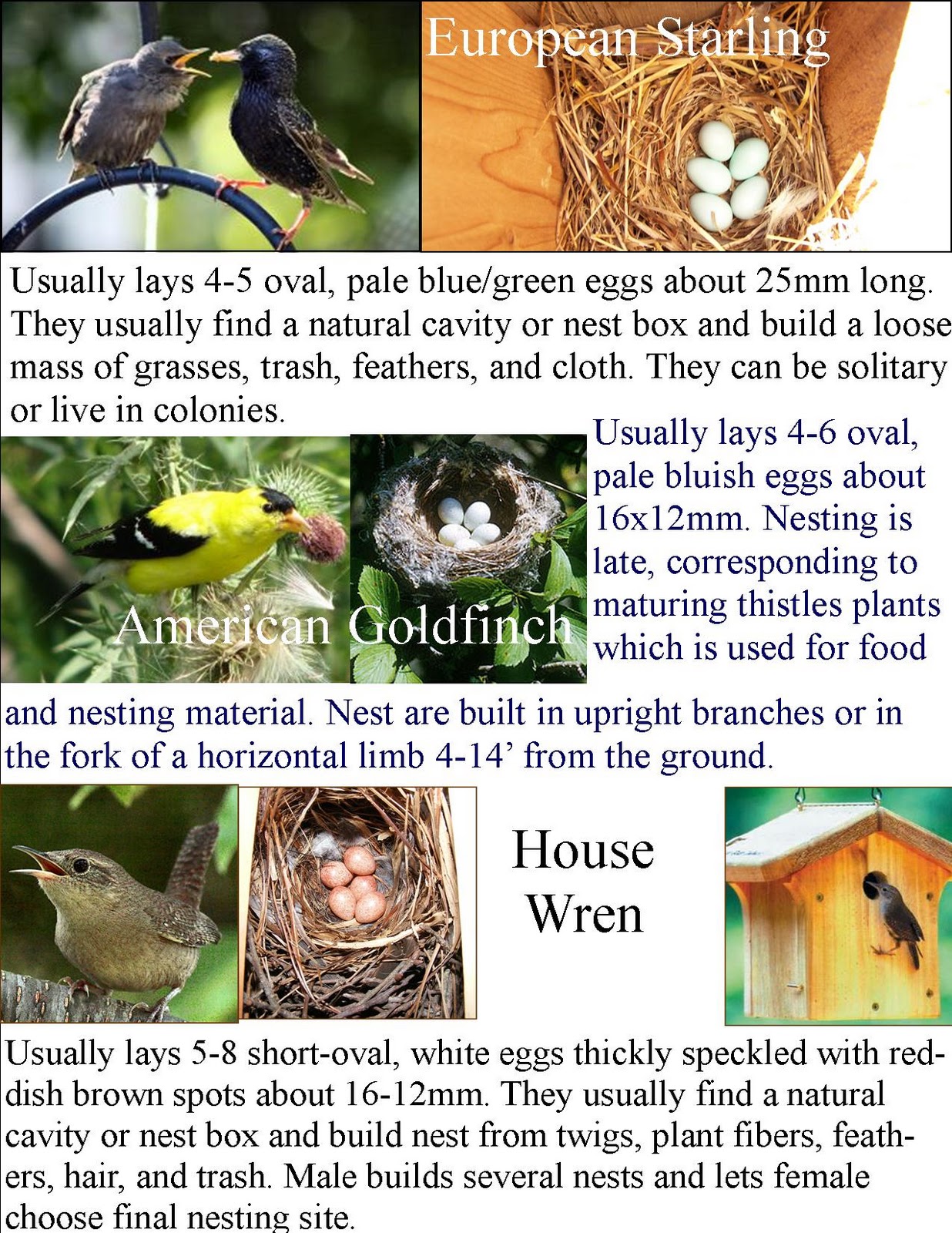
How To Identify A Bird Nest 746
Green-Barred Woodpecker in Cavity Nest. As you might expect, a cavity nest is made in an open cavity in something like a tree. The nests are normally lined with materials such as moss, grass, feathers, and leaves, among other things. You would normally find birds such as ducks, owls and bluebirds residing in a cavity nest, but these species would take over cavities that had already been made.
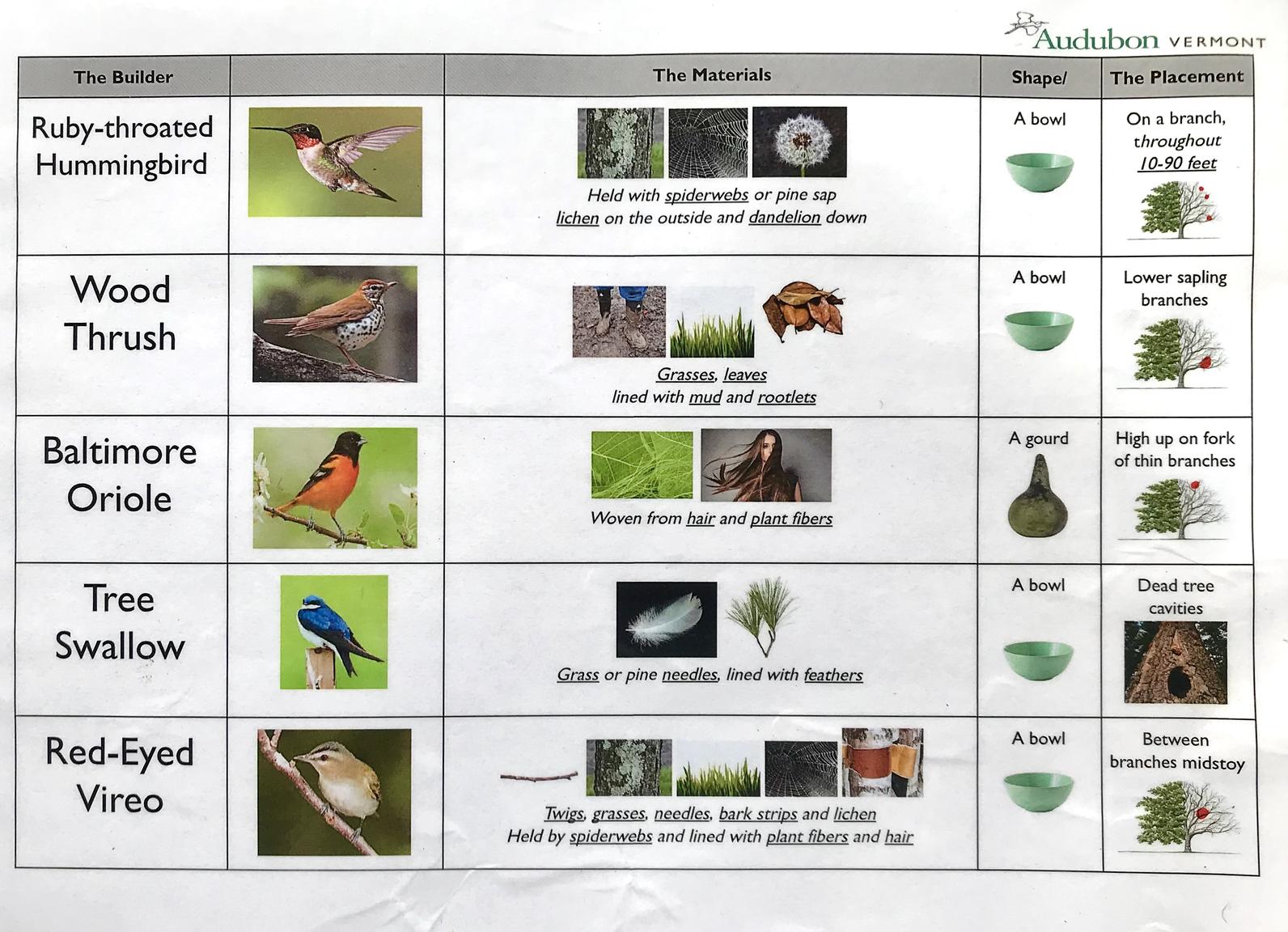
Build Your Own Bird Nest! Audubon Vermont
The design of the nest may also be influenced by the location where it is built, with birds adapting their nest to better blend in with their surroundings. Examples of birds that build cup nests include the American Robin, Eastern Phoebe, and House Finch. These birds are common in North America and can often be observed building.

Pin by Susanne Hoshino on Birds Backyard birds watching, Backyard
Some species of birds build mound nests, in which the eggs are hatched by heat generated by decomposing plant materials. This type of nest is called a "mound nest" or "incubators nest". In mound nests, the male is responsible for maintaining the temperature in the nest by regulating the amount of plant material in the nest. As the plant material decomposes, it generates heat, and the male must.

BIRDS & THEIR HOMES SIZE 24 X 36 CMS CHART NO. 138
Children can learn about how different species of birds build their nests using other techniques and materials. Sometimes, finding a new bird nest is just as exciting as a new bird. It's a bonus when you can find eggs in the nest!. The take-along guidebook Birds, Nests, And Eggs has several hands-on activities. One is making your own suet.

types of bird nests pictures
Size (W X H) : 33.00 cms X 21.50 cms Pictorial Educational Charts Multi-Colour, Tack Gummed, Perfect Cut & Easy-To-Peel-Off Stickers Accurate Updated Information Well-Researched Topics Wide Arena of Subjects Exclusive Designs For Pre-Primary to Secondary Level - Project Needs

Identifying birds, nests and eggs with The Homeschool Scientist
Others use rodent and mammal holes, such as the common kingfisher that takes over rabbit burrows. Some, like the European bee-eater, nest in colonies, with many tunnels leading to an inner chamber where the eggs are kept. Scrape Nest. Ostriches lay their eggs in simple scrapes in the soil. However, these birds are vulnerable to nest predation.

3 Best Tips For Bird Nest Identification (for newbie birders!) YouTube
Birds use their beaks and feet to carve out their burrows. Most birds create their own burrows, but some—such as burrowing owls—prefer to use those created by others. This type of nest is commonly used by seabirds, especially those that live in colder climates as a burrow nest can offer protection from both predators and the weather.
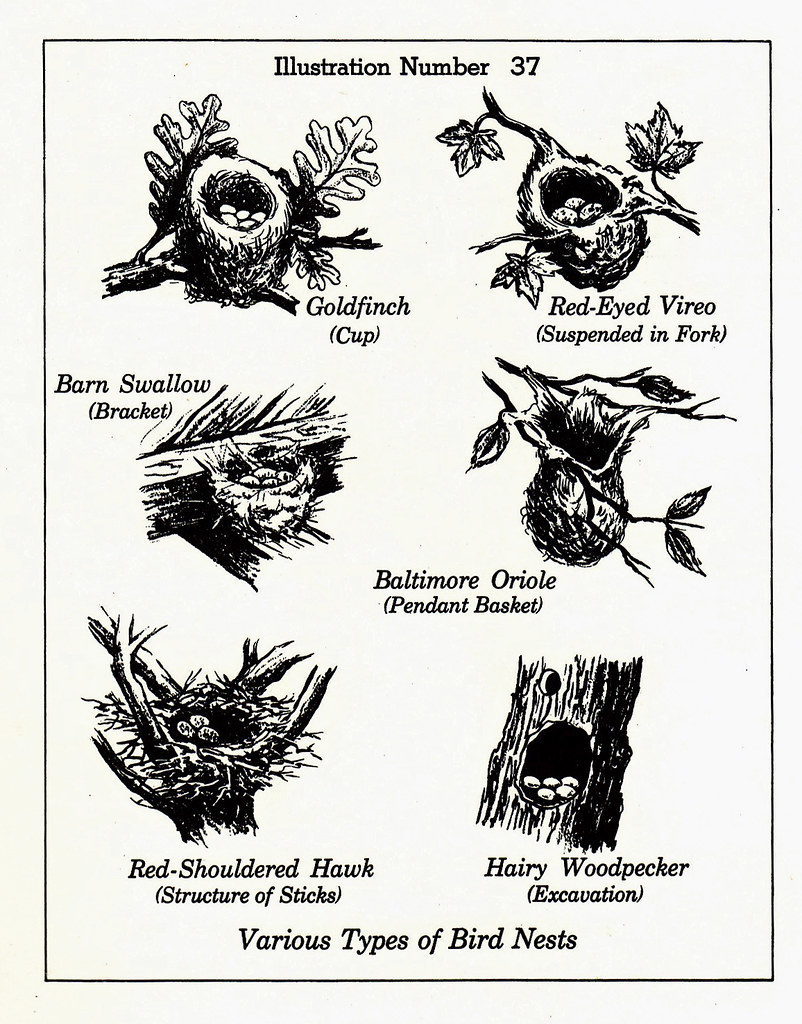
Various Types of Bird Nests Illustration scanned from a vi… Flickr
Many birds nest on the ground, with nests of varying degrees of complexity. But far fewer birds nest within holes in the ground. Nesting in holes would seem to be a better strategy than nesting in the open. One survey of over 180,000 eggs revealed that where non-hole nesters averaged 50% rearing success, hole nesters averaged 70%.

Pictures Of Birds Making Nest And Names Of Them
Migratory birds tend to have distinct seasons for breeding and wintering, whereas resident birds live in the same area year-round. Thus, if you are seeing a nest in the early spring, it likely belongs to a year-round resident of the area. Active nests found in the late spring or early summer are more often those of migratory birds.

Types Of Birds FREE Nesting Birds Poster Backyard birds watching
The real entrance is very narrow and is just above the false entrance. The birds open and close the entrance with their feet when they arrive or leave the nest. These penduline tits roost in these nests even out of breeding season. Cisticolas build their oval ball-shaped nest deep in a little low bush or clump of grass, well hidden from predators.

Nest identification chart Wildcat Wilderness
These crucial first weeks and months determine the survival of a young bird, and using a nest dramatically increases their chance of success. While some birds raise their young without a nest, and some simply steal or reuse the old nests of other species, most birds rely on nests for successful incubation and the survival of their offspring.
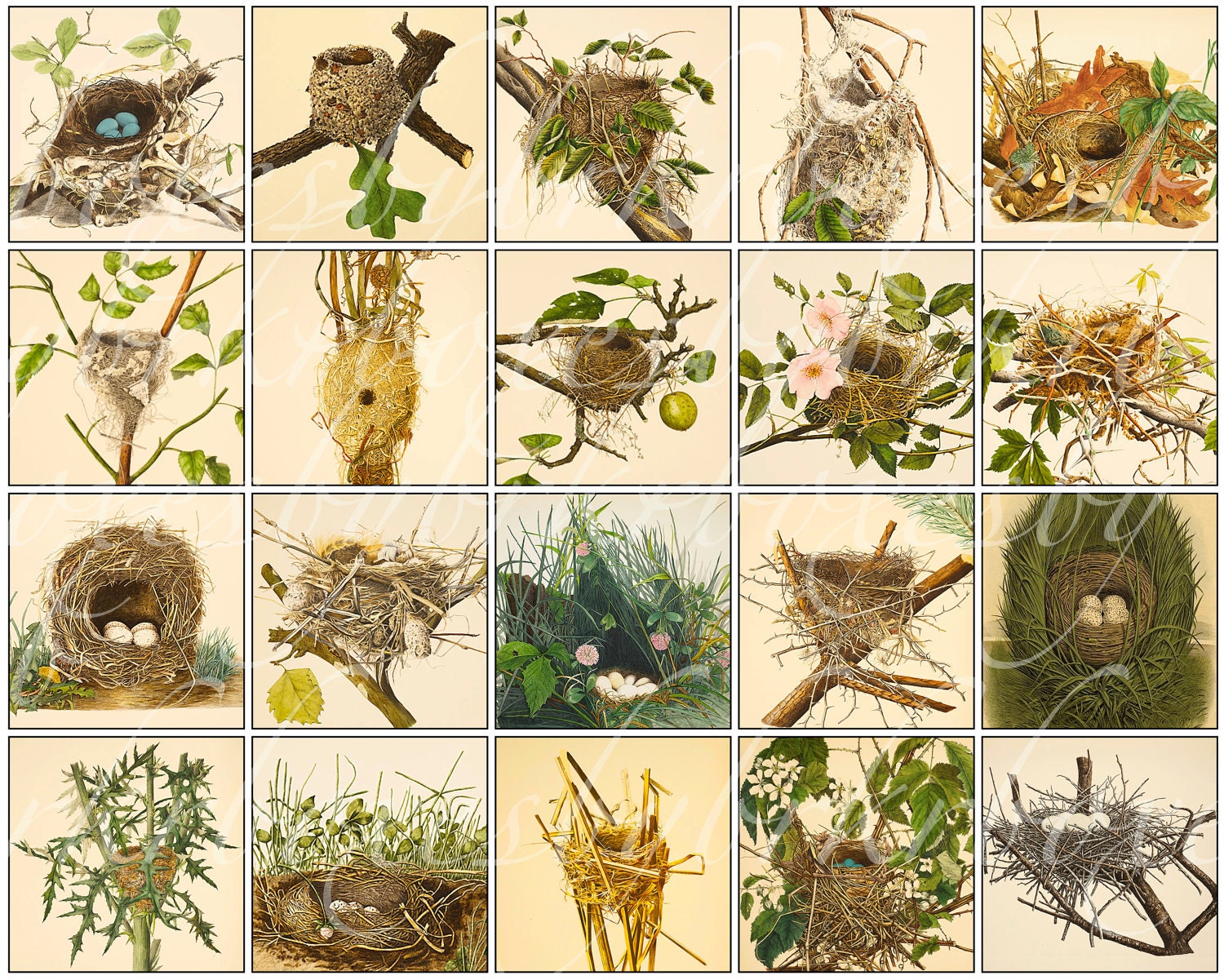
Information Chart Of Birds And Their Nests
Follow these 9 proven tips to attract nesting birds. 1. Long-Lasting Large Bird Nests Courtesy Tonya Sharp Bald eagles make their nests bigger each year. The grand champion bird nest-builder is… the bald eagle! In 1963, an eagle's nest near St. Petersburg, Florida, was declared the largest at nearly 10 feet wide, 20 feet deep and over 4,400.
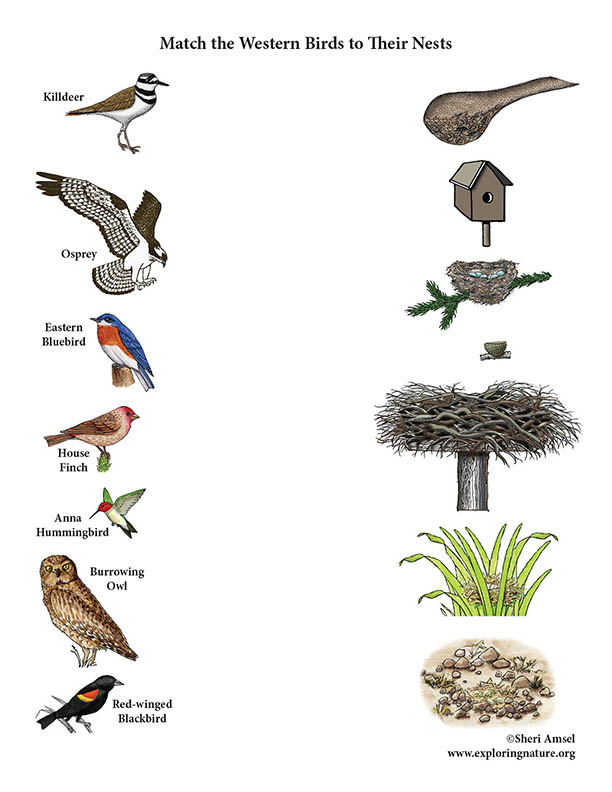
Match the Western Birds to their Nests
The species listed are a few examples below of birds that prefer their nests in the open, either in the crooks of tree trunks or on nesting platforms. Having plenty of trees, bushes, and platforms off the ground will help you attract these birds because they will NEVER use a birdhouse.. Review the chart in Tip #1 for more info. #9. If you.

an image of birds and their nests on a white background with the words
Location: Different species of birds will make their nests in different places. Identifying whether the nest is in a cavity like a birdhouse or a tree, a low shrub, a high tree, or even unusual places like flower pots can help you narrow down what species of bird the nest may belong to. For example, bluebirds are a common species.